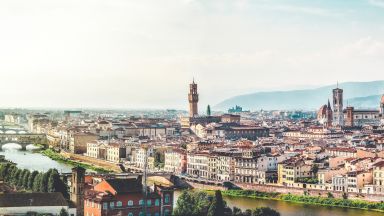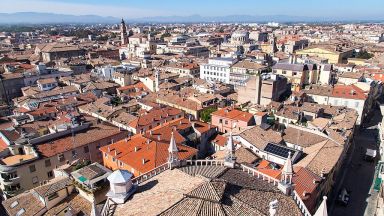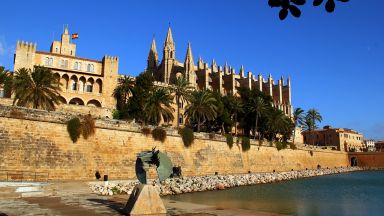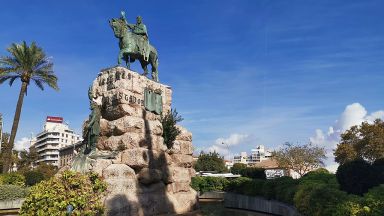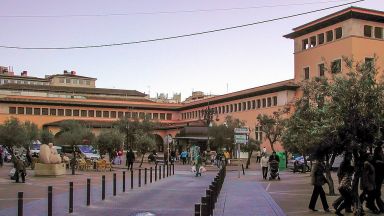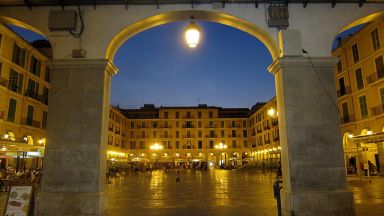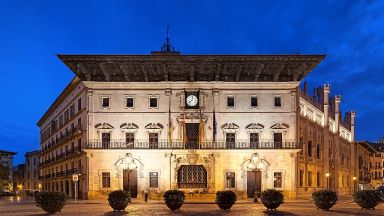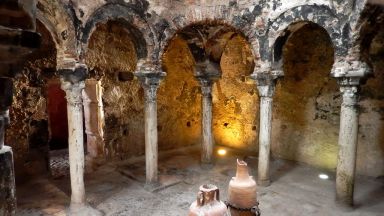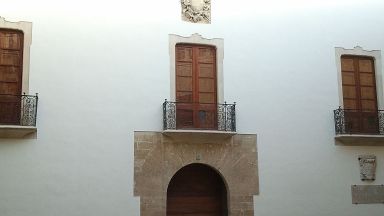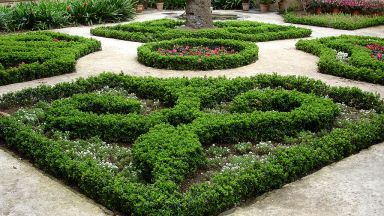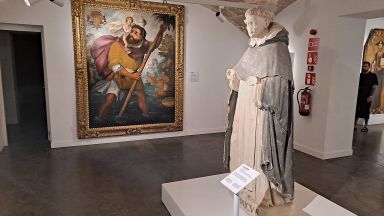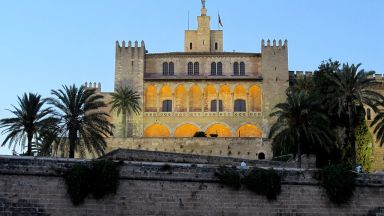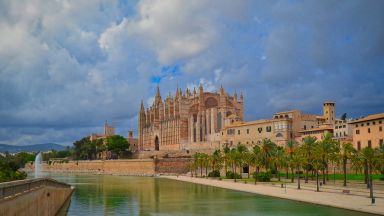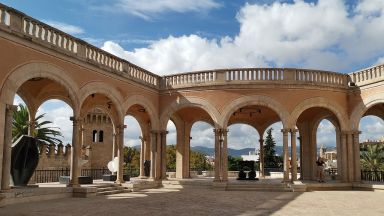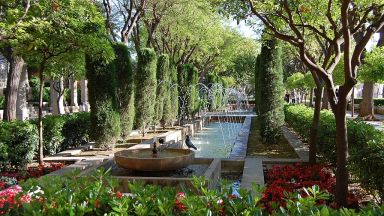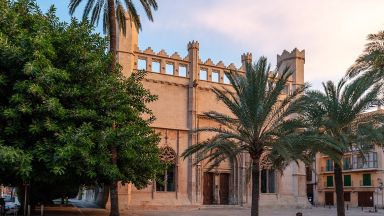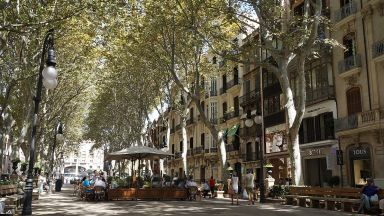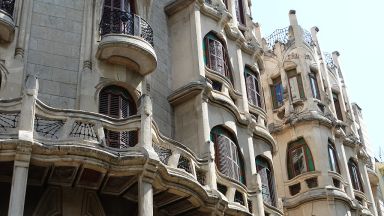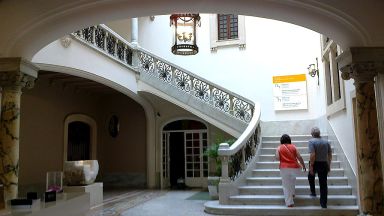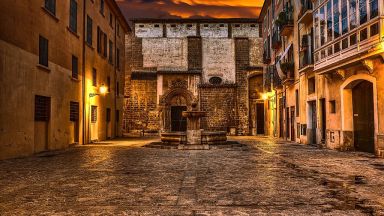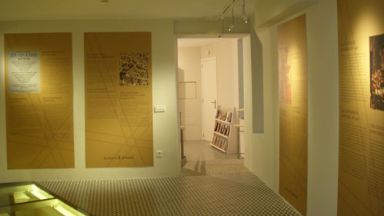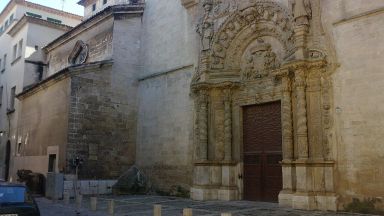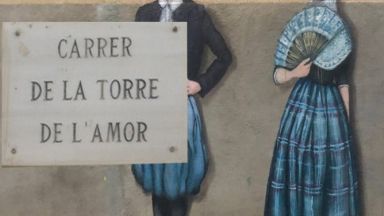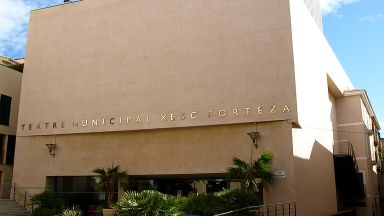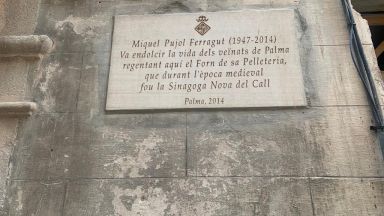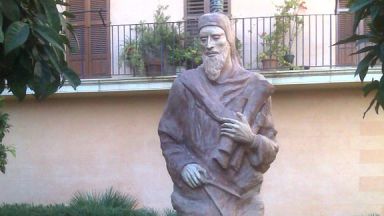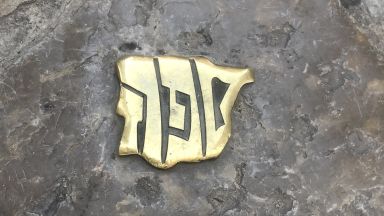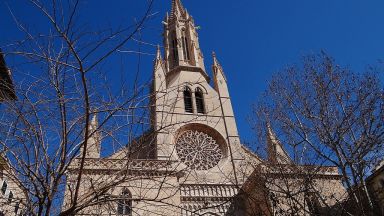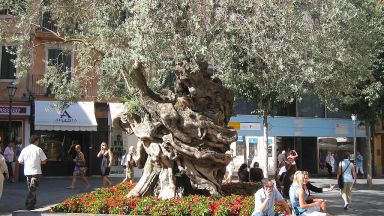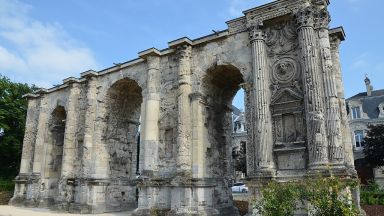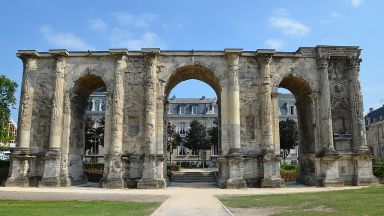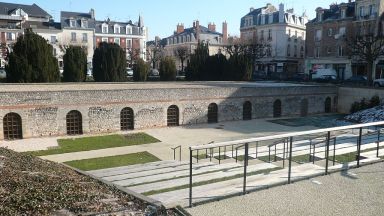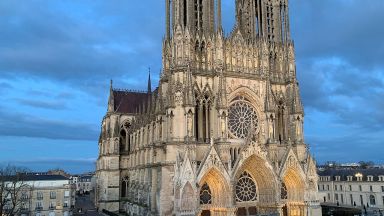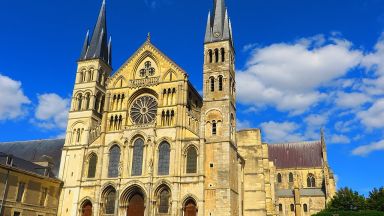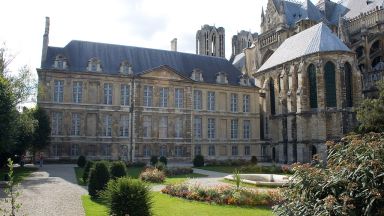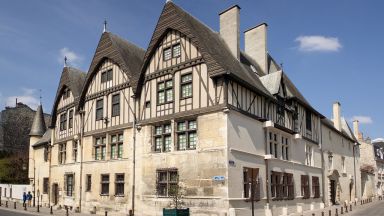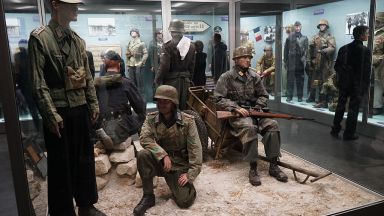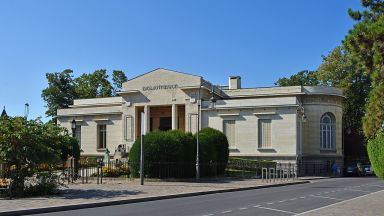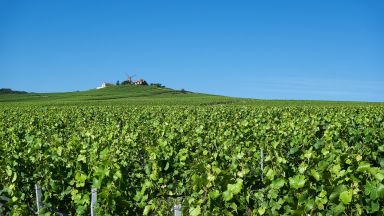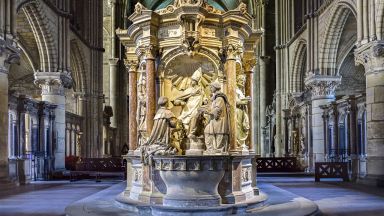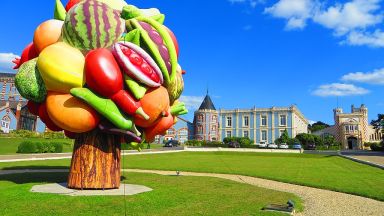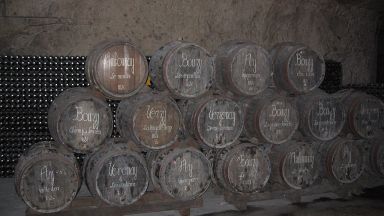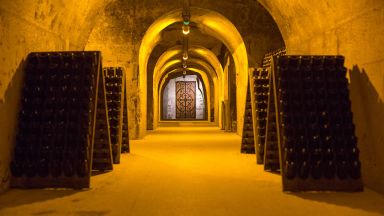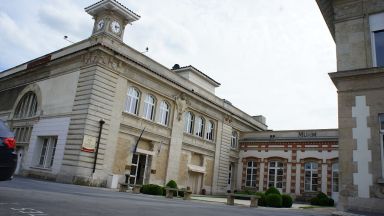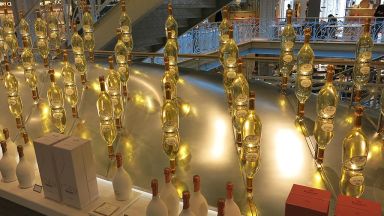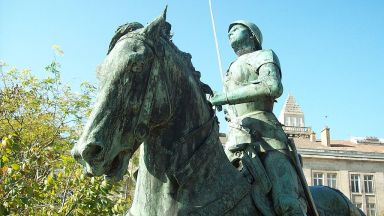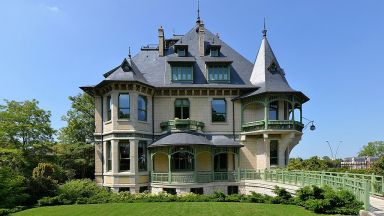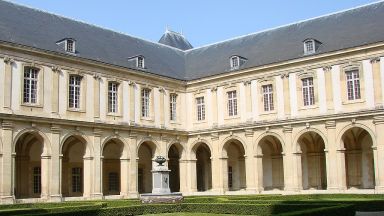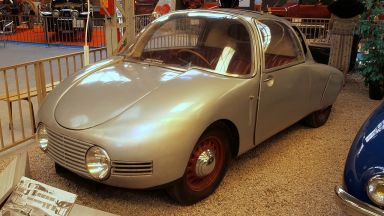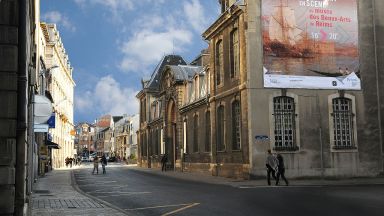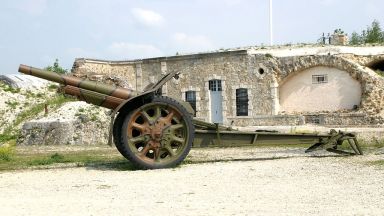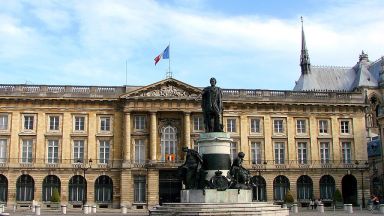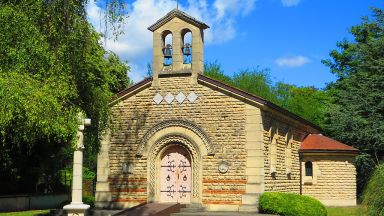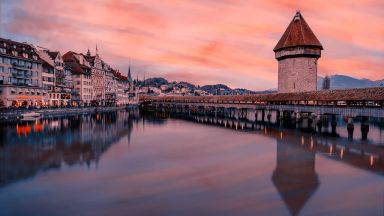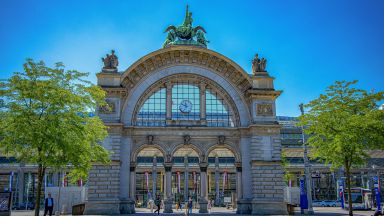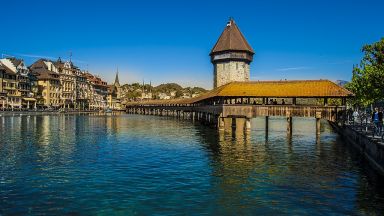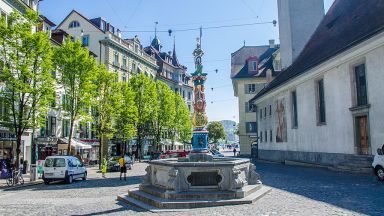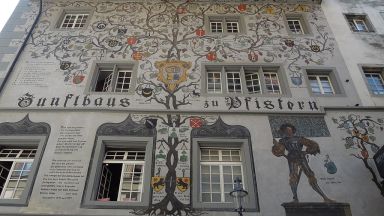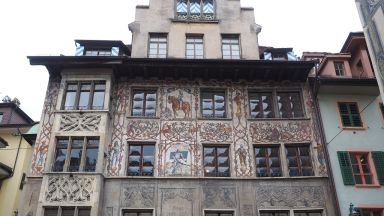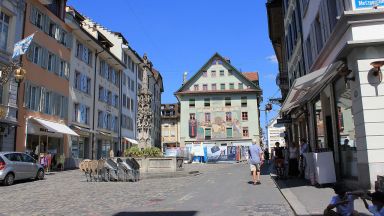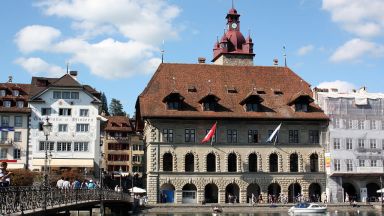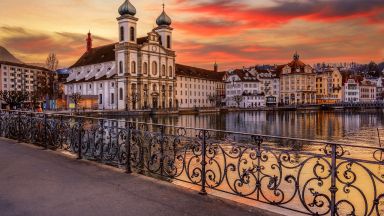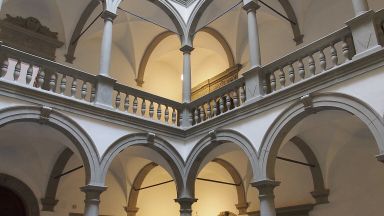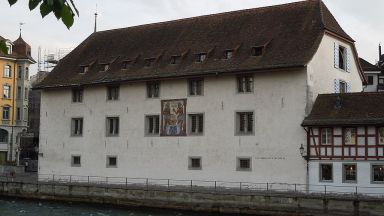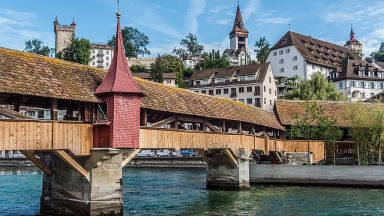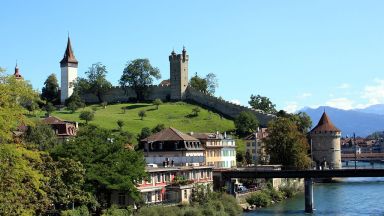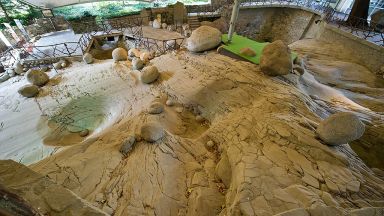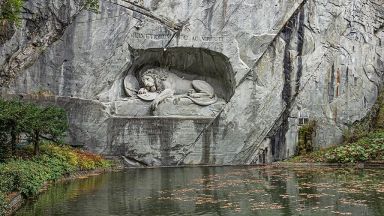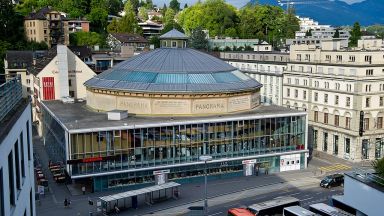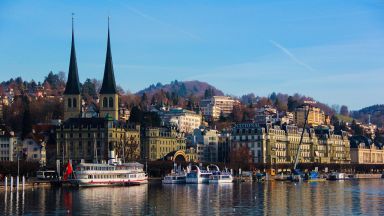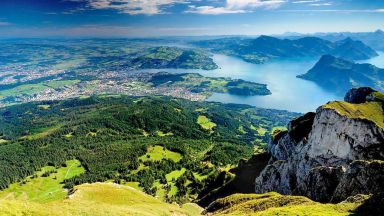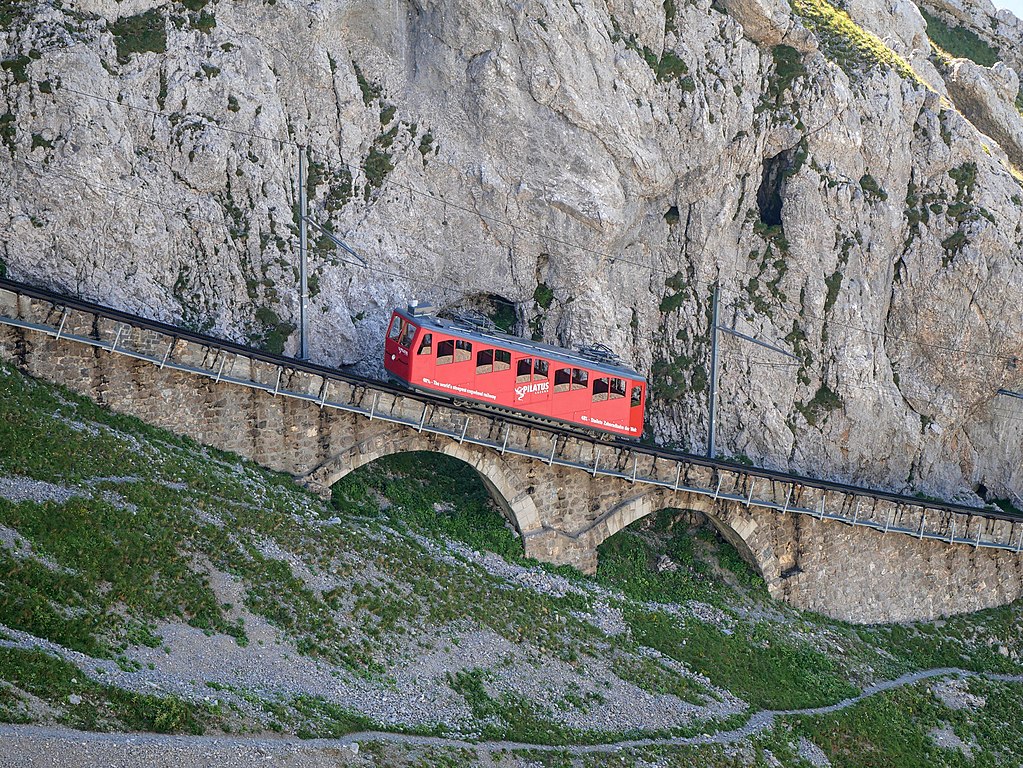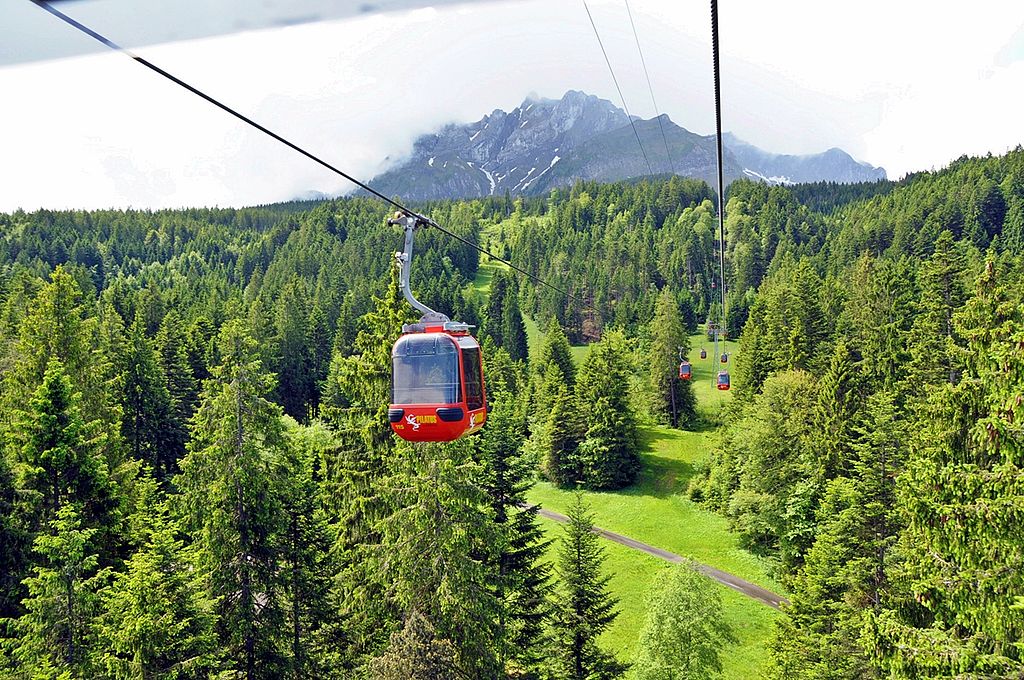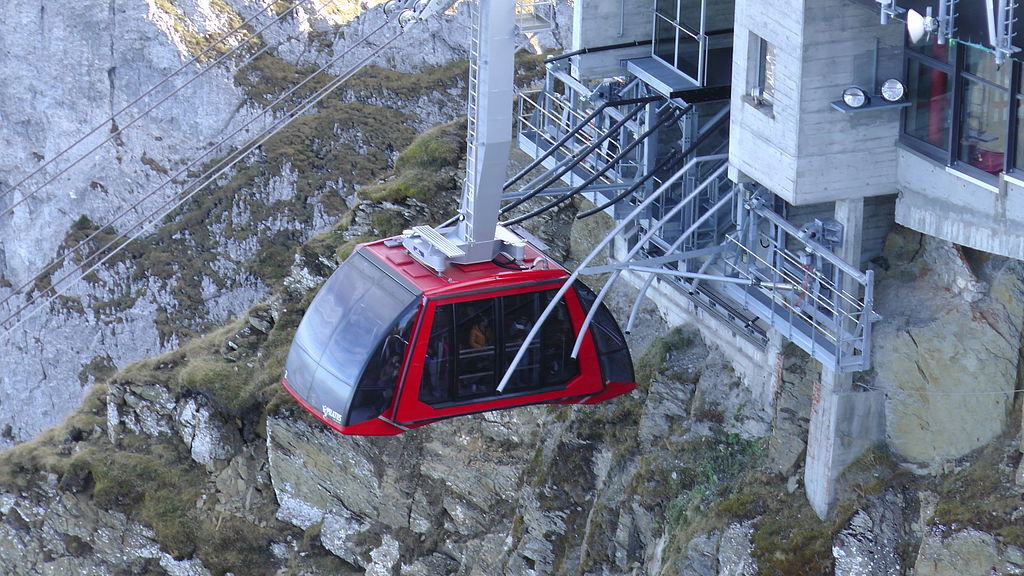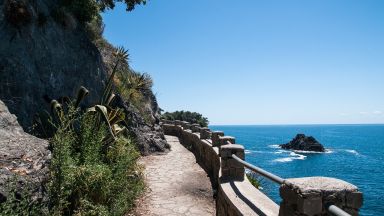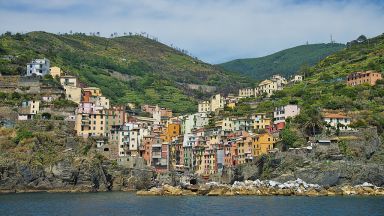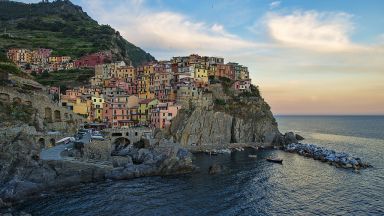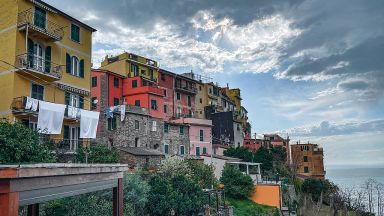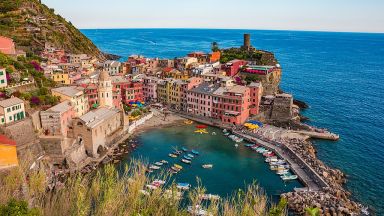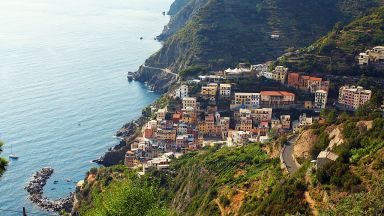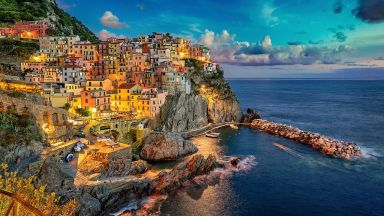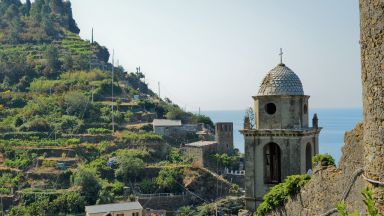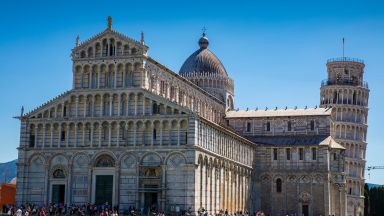Walking Tour of Arezzo in Tuscany (with Maps!)
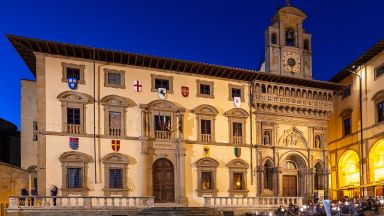
This website uses affiliate links which earn a small commission at no additional cost to you.
Situated in Eastern Tuscany and conveniently accessible with just a one-hour train ride from Florence, the city of Arezzo is perched atop a unique hilltop, where four valleys converge: the Val Tiberina, Casentino, Valdarno, and Valdichiana. This charming city, known for its historical prominence in goldsmithing, is a hidden gem awaiting European travelers. Arezzo boasts a captivating blend of beauty and vibrancy, enriched by its profound artistic and architectural heritage.
One of the wealthiest cities in Tuscany, Arezzo offers an authentic and immersive experience, far removed from the crowds and tourist masses often found in more well-known destinations. Exploring all that Arezzo has to offer allows you to uncover the treasures of Italian history and culture at your own leisurely pace.
How To Get To Arezzo
From Rome: Arezzo makes for a convenient day trip from Rome, with just an hour’s journey by high-speed train departing from Rome’s Termini station. You can even explore both Arezzo and Cortona on a guided full-day tour departing from Rome.
From Florence: If you’re starting your day trip from Florence, you have multiple options. You can opt for a pleasant train ride with departures every half hour.
Arriving by car: Coming from the north or the south, the Autostrada del Sole has an exit for Arezzo. For those traveling by car, it’s advisable to park on the outskirts of the town or at the Arezzo train station. You should try the Parcheggio Pietri or if you are arriving by motorhome try Parcheggio Camper di Via Guido Tarlati .
Guided or Self guided Tour of Arezzo
This guide gives you a great tour of Arezzo, if you are keen to be able to ask questions and chat with a knowledgeable local guide then I recommend either joining a Group Tour of Arezzo, or a Private Walking Tour of Arezzo.
Archaeological Museum & Roman Amphitheatre
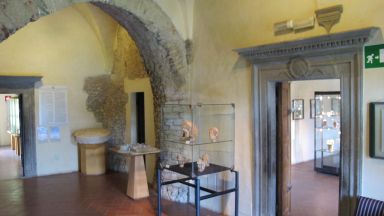
From the train station head directly out down the Via Guido Monaco to the Piazza Guido Monaco. Guido Monaco was born around the year 1000, most probably in Arezzo. He was a Benedictine monk and taught music, he invented the first musical annotation and he introduced the tetragrama. Turn right and walk down Via Roma. After the third turning the Archaeological Museum and the Roman amphitheatre are on your left.
The Archaeological Museum of Arezzo, situated within the former San Bernardo monastery, which in itself was built on top of an Roman amphitheatre! The location offers a tranquil setting to explore the rich cultural heritage of the region dating back to the 2nd century. This museum provides a valuable opportunity to delve into ancient history, spanning from prehistoric periods to the Etruscan and Roman eras.
One of the highlights of the museum’s collection is the “coralline vases,” showcasing a unique ceramic technique that has been associated with Arezzo since ancient times. These artefacts offer a glimpse into the artistry and craftsmanship of the region’s inhabitants throughout history, making the museum an essential destination for history enthusiasts and art lovers alike.
Location: Museo Archeologico Nazionale Gaio Cilnio Mecenate, Via Margaritone, 10, Arezzo, Province of Arezzo, Italy | Hours: Monday to Saturday / 9.00 am – 7.30 pm Sundays and public holidays / 2.30 pm – 7.30 pm First Sunday of the month / 9:30 am – 7:30 pm | Price: €7.00 | Website
Read more about National Archaeological Museum Gaius Cilnius Maecenas
The Medici Fortress
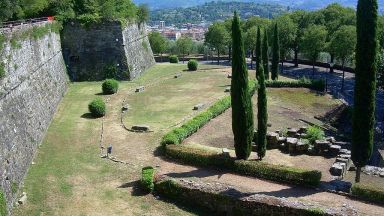
Leave via the gates you entered and turn right and continue along the Via Francesco Crispi. Turn left down Via Antonio Guadagnoli. Enter the park on your right, and walk along the outside of the old city walls. Walk past the Viale Andrea Sansovino Bastion, and you will come to the Porta Sant’Andrea also known as the Porta Trento e Trieste. It is one of the four gates to the old city. Continue up the Viale Andrea Sansovino. Turn right then first left down Vicolo delle Terme and turn left to walk along the Viale Bruno Buozzi. The fort is on your right and you need to walk anticlockwise around it to get to the entrance via the Prato della Fortezza Medicea park, on the way you pass some Etruscan ruins.
The Medici Fortress, constructed between 1538 and 1560, stands proudly within the city walls of Arezzo. Originally an imposing five-pointed fortress, it reflects a mix of architectural styles and has a storied history. Part of the fortress was dismantled by the French in 1800, leaving visible signs of the explosion damage on the west side.
While the fortress serves as a reminder of bygone eras, it offers a unique opportunity to experience a 360-degree panoramic view of Arezzo and the surrounding landscape from its towering walls. This vantage point provides a breath-taking perspective of the city and its picturesque surroundings.
Location: the c, Viale Bruno Buozzi, Arezzo, Italy | Hours: Mon – Wed – Thur – Fri / 11.00 am – 7.00 pm (last admission at 6.30 pm) Sat – Sun / 10.00 am – 8.00 pm (last admission at 7.30 pm) | Price: €8,00
Read more about Medici Fortress, Arezzo
Piazza Grande
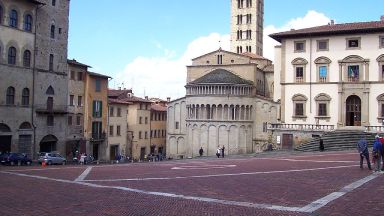
Walk back through the park and continue along Viale Bruno Buozzi, turning first left, cross over Via dei Palagi and down the steps. Turn to the left and first right to get to the Piazza Grande
.
A visit to Arezzo would be incomplete without immersing yourself in the enchanting ambiance of Piazza Grande. This square serves as a captivating microcosm of Italian history, seamlessly blending traditional, medieval, and Renaissance architecture into one expansive and breath-taking open space.
Piazza Grande is surrounded by a panorama of towers, churches, and palazzos, creating an exquisite backdrop for various events and gatherings. Among its notable attractions is Arezzo’s renowned antiques fair, held on the first weekend of every month and drawing tens of thousands of visitors. Additionally, the square serves as the epicentre of the Giostra del Saracino, a medieval jousting tournament featuring the city’s eight districts, which takes place in June and September annually.
The piazza offers numerous spots where you can simply sit, unwind, and observe the ebb and flow of life around you, such as the charming lounge areas beneath the Loggia del Vasari. Furthermore, there is an abundance of restaurants, cafes, and bars to choose from, making it the ideal locale for a midday break to savour the flavours of Arezzo.
Location: Piazza Grande, Piazza Grande, Arezzo, Italy
Read more about Piazza Grande, Arezzo
Palazzo della Fraternita dei Laici in Arezzo
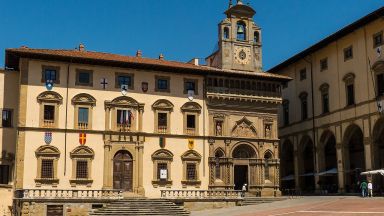
Walk to the right along the top of the square to reach the Palazzo della Fraternita dei Laici.
Location: Palazzo della Fraternita dei Laici, Via Giorgio Vasari, Arezzo, Province of Arezzo, Italy | Hours: Every day / 10.30am – 6.00pm | Price: € 5,00
Read more about Palazzo della Fraternita dei Laici in Arezzo
Church of Santa Maria della Pieve
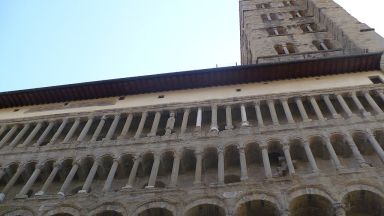
Walk down the west side of the square to the rear of Santa Maria della Pieve. Walk to the side of it down Via di Seteria and first right down Corso Italia to reach the entrance.
The parish church in Arezzo, characterized by its facade featuring three portals, is a prominent landmark along Corso Italia. Meanwhile, the apse of this church can be admired from Piazza Grande. The church is graced by a towering bell tower known as the “Hundred Holes” due to its numerous mullioned windows.
Stepping inside the church, visitors are greeted by a remarkable polyptych titled “Vergine col Bambino e i Santi Giovanni Evangelista, Donato, Giovanni Battista e Matteo” (Virgin and Child and Saints John the Evangelist, Donatus, John the Baptist, and Matthew). This masterpiece, dating back to the 14th century, is the creation of Pietro Lorenzetti and is executed in tempera and gold on panel. It stands as a testament to the artistic excellence of the era.
Location: Santa Maria della Pieve, Corso Italia, Arezzo, Province of Arezzo, Italy
Read more about Church of Santa Maria della Pieve in Arezzo
Ivan Bruschi House Museum
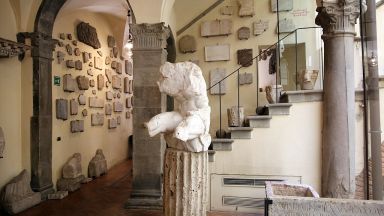
The Ivan Bruschi House Museum opposite the entrance to the church.
The Ivan Bruschi House Museum is situated in Arezzo, within the medieval Palazzo del Capitano del Popolo, facing the Parish Church of Santa Maria. This historic building dates back to the 13th century and has a rich history. In the 14th century, it was owned by the Camaiani family, and by the 15th century, it had become property of the city’s government. Over the years, it served various purposes, including housing the mint for the Guelph faction in Arezzo and potentially serving as the residence of the Capitan of Justice. During World War II, the building suffered damage, but it was later restored in the 1960s by Ivan Bruschi.
The museum is dedicated to Bruschi’s extensive collection. Following his passing in 1996, the foundation was established under the name “Fondazione Bruschi” with the aim of promoting the culture of antique collecting in the Arezzo region. The museum’s exhibition showcases Bruschi’s diverse interests, spanning from Prehistory to the 20th century and encompassing objects from beyond Europe.
The museum’s collection began to take shape in the 1960s when entire collections were acquired. It continued to expand through the acquisition of individual objects from both local and distant antique markets, reflecting Bruschi’s passion for collecting and preserving cultural heritage.
Location: Fondazione Ivan Bruschi - Casa Museo dell'Antiquariato Ivan Bruschi, Corso Italia, Arezzo, Province of Arezzo, Italy | Hours: Wednesday to Sunday: Opening hours 10.00 - 13.00, 14.00 - 18.00 | Price: €5.00 | Website
Read more about Fondazione Ivan Bruschi - Casa Museo dell'Antiquariato Ivan Bruschi
Palazzo Pretorio
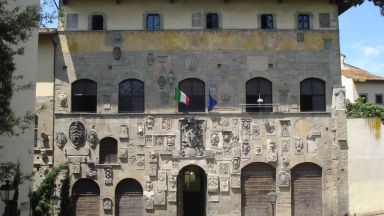
Continue to walk up the Corso Italia.
Palazzo Pretorio, located on Via dei Pileati in Arezzo, is a historic palace constructed between the 14th and 15th centuries. Over the centuries, it was inhabited by noble families in Arezzo and served various functions. Today, it houses Arezzo’s library.
One distinctive feature of Palazzo Pretorio is its facade adorned with coats of arms. These coats of arms represent the Florentine Podestà and Commissari who governed the city during different periods of its history. This external decoration provides a visual record of the various authorities that held power in Arezzo over the years.
Location: Pretorio Palace, Via dei Pileati, Arezzo, Province of Arezzo, Italy
Read more about Palazzo Pretorio in Arezzo
Arezzo Cathedral
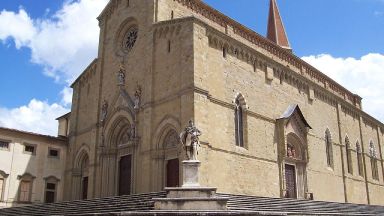
Continue up the street and you will see the cathedral on your left.
Perched majestically atop the commanding hill of Arezzo, the Gothic Cathedral of Santi Donato e Pietro conceals a wealth of intricate and awe-inspiring details within its walls. This cathedral boasts an impressive collection of artistic treasures, including works by renowned figures such as Andrea della Robbia, medieval stained glass, a baptismal font relief sculpted by Donatello, and the exquisite fresco of St. Mary Magdalene painted by Piero della Francesca around 1460 in the left nave.
Visiting this cathedral provides a profound glimpse into the rich artistic heritage and cultural depth of Arezzo, where each masterpiece within its hallowed halls adds to the tapestry of this historical city.
Location: Arezzo Cathedral, Piazza Del Duomo, Arezzo, Province of Arezzo, Italy | Hours: Monday to Saturday: 10.00 am to 6.00 pm Sundays and Public Holidays: 1.30 pm to 6.00 pm | Price: € 6.00 | Website
Read more about Cattedrale dei Santi Pietro e Donato, Arezzo
Church of San Domenico
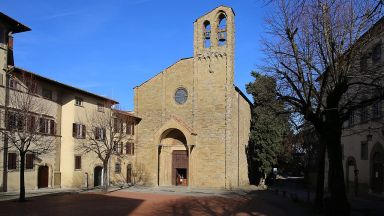
As you leave the Cathedral turn right into through the building and down the escalator past the tourist office. Continue until you leave through the city walls via the Porta Stufi o Stufo. Walk along the path keeping the city walls on your left and enter back into the city via the Pozzolo Postern. Walk down Via del Bastione with the Basilica di San Domenico on your right.
Another must-visit gem in Arezzo is the Church of San Domenico, an architectural masterpiece in the Gothic style located on the outskirts of the city center. This Romanesque church is home to the famous wooden Crucifix painted by Cimabue, regarded as one of the masterpieces of the 13th century. This exceptional work of art is the first of two crucifixes attributed to the renowned Italian painter, making it a compelling stop on your journey through Arezzo.
Arezzo offers a wealth of other attractions waiting to be explored, including the Medici Fortress, Arezzo Cathedral, and the beloved Roman amphitheater. Immerse yourself in the city’s rich history, art, and architecture, and experience the authentic community spirit that still echoes the medieval commune that Arezzo once was. This Tuscan town invites you to savor its cultural treasures and vibrant heritage.
Location: San Domenico, Piazza San Domenico, Arezzo, Province of Arezzo, Italy
Read more about Church of San Domenico in Arezzo
Vasari House Museum
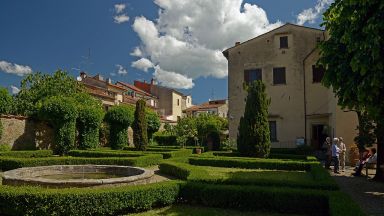
From the entrance to the Church of San Domenico cross the square and tur right down Via Di S. Domenico. Turn second left down Via XX Settembre. The Museo di Casa Vasari is on the right.
The elaborately decorated interiors of Giorgio Vasari’s home in Arezzo are a hidden gem that art lovers should not miss during their visit to the city. This unique site offers a rare glimpse into the life and work of an artist from the late Renaissance period. Vasari’s house is adorned with stunning frescoes and tempera paintings created by Vasari himself and his talented pupils.
Inside, visitors will find a rich collection of artworks, including around fifty paintings from the sixteenth century that are thoughtfully arranged throughout the rooms. This artistic treasure trove allows visitors to immerse themselves in the world of Giorgio Vasari, one of the prominent figures of the Italian Renaissance, and gain a deeper appreciation for his contributions to art and culture. It’s a captivating experience that adds an extra layer of depth to a visit to Arezzo, making it a must-see destination for art enthusiasts.
Location: Casa Vasari, Via XX Settembre, Arezzo, Province of Arezzo, Italy | Hours: Monday, Wednesday, Thursday, Friday and Saturday, entry every hour from 8.30 to 18.30. Sunday and holidays entry every hour from 8.30 to 12.30, with 1 hour visiting shifts. | Price: €5.00 | Website
Read more about Casa Vasari Museum in Arezzo
National Museum of Medieval and Modern Art in Arezzo
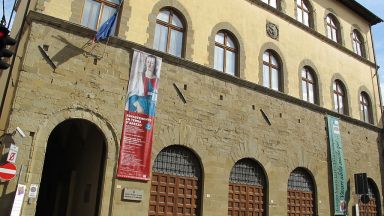
Walk down Via XX Settembre and the National Museum of Medieval and Modern Art in Arezzo is on your right.
The museum located within Palazzo Bruni-Ciocchi, also known as Palazzo della Dogana, is an exquisite destination set within one of the most beautiful Renaissance buildings in Arezzo. The palace itself boasts a charming courtyard and a magnificent staircase, adding to the allure of the museum. Its collection represents a confluence of private collectors’ and the city’s main institutions’ cultural and artistic interests and activities.
The museum houses a remarkable array of sculptures and paintings dating from the 13th to the 16th century, showcasing the talent of renowned artists such as Giorgio Vasari, Margaritone, Spinello Aretino, Parri di Spinello, Bartolomeo della Gatta, Luca Signorelli, Guido da Siena, and Lorentino d’Andrea. These artworks provide a captivating journey through the evolution of art during this period, highlighting the richness and diversity of artistic expression.
In addition to the paintings and sculptures, the museum’s collection also includes ceramics, glassware, coins, ivories, weapons, and bronzes. This wide-ranging assortment offers insights into various aspects of material culture and craftsmanship during the Renaissance and earlier periods, contributing to a comprehensive understanding of the artistic and historical heritage of Arezzo and Tuscany as a whole.
Location: Museo Nazionale d'Arte Medievale e Moderna, Via San Lorentino, Arezzo, Province of Arezzo, Italy | Price: € 7,00 | Website
Read more about National Museum of Medieval and Modern Art in Arezzo
Basilica di San Francesco
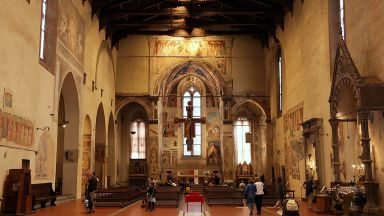
Leave the museum and turn left back up Via S. Lorentino, turning first right down Via Cavour. Continue down the street until you reach Piazza S. Francesco and the Basilica di San Francesco.
One of the most renowned attractions in Arezzo is the Bacci Chapel within the Basilica di San Francesco, also known as the Church of San Francesco. This unassuming medieval church houses one of Italy’s most celebrated masterpieces of Renaissance art: Piero della Francesca’s fresco cycle depicting The Legend of the True Cross. These exquisite frescoes center on the belief that Empress Helena, during her pilgrimage to the Holy Land, had a divine revelation and discovered the true cross of Christ – a sight of extraordinary beauty and significance.
Visiting the Church of San Francesco in Arezzo is a must for art enthusiasts and history buffs. However, it’s important to plan ahead and book your tickets in advance, as this popular attraction often sells out due to its historical and artistic significance. Keep in mind that the visual impact and the depth of emotion conveyed by Piero della Francesca’s frescoes are truly remarkable and cannot be fully captured in photographs, making a personal visit even more rewarding.
Location: Basilica di San Francesco, Piazza San Francesco, Arezzo, Province of Arezzo, Italy | Hours: Mon - Tue - Thu - Fri / 9:00 a.m. - 7:00 p.m. Sat / 9:00 a.m. - 7:00 p.m. Sun / 1:00 p.m. - 6:00 p.m. Last entry 30 minutes before closing. Tours interrupted due to church service from 10:30 a.m. to 11:00 a.m | Price: € 10.00 | Website
Read more about San Francesco Basilica in Arezzo
From the church turn right and right again down Via S. Francesco, first left onto Via Beccheria and right to walk down Via Guido Monaco until you reach Via Roma and the Piazza Guido Monaco on your right. Retrace your steps back to the train station.
This website uses affiliate links which earn a small commission at no additional cost to you.
